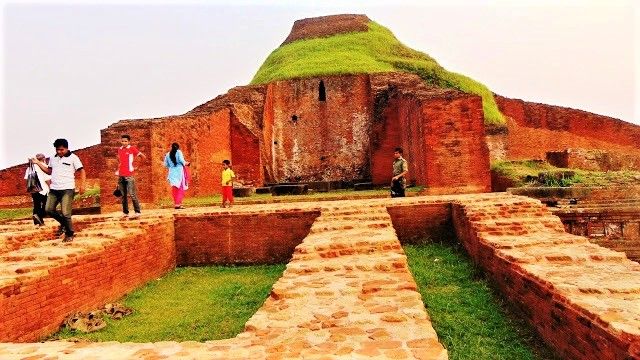Somapur Mahavihar

source: google.com
Somapur Mahavihar is a Buddhist monastery of ancient Bengal. With the excavated Bihar complex of Paharpur Somapur Mahavihar was considered identical. The Vihara established the second king of Pala dynasty Dharmapala (c. 781-821 AD). Some clay seals were found from the ruins, where there is inscription 'Sri-Sompur-Sri-Dharmapaldev-Mahabihiraarai-Bhikku-Sangma'. From Lama Taranath and other Tibetan sources, it is known that Devapala created it after the victory of Varendra. Probably the unfinished works of Dharmapalay are ended during his deserving successor Devapala. The Pala rulers were the devoted followers of Buddhism. In almost all the growing empire, they established a number of monasteries. Some of these were famous education centers. Their fame spread quickly almost everywhere in Asia. The close relationship of the Somapura Mahavihara with the ruling dynasty indicates that there was a rise and fall in the political uplift of the donors.

source: google.com
In the Paharpur pillar of the 5th King of Mahendrapala, from the ruins of the main temple, the name of the monk vijayvarbhav is mentioned. Mahendra is considered to be identical with a king of the same name. From the newly discovered Jagjivanpur copperplate of Mahendra, it has been undoubtedly that he was a king of the Pala dynasty and the son and successor of Devapala. It has been proved that Mahendra Singh continued to give patronage to this monastery. In the reign of Mahipala, during the reign of Mahipala (c. 995-1043 AD), this monastery was repaired and renovated. It is mentioned in the Tibetan book Pag-Sam-Jon-Zang that the King regularly visited the Somapura Mahavihara to pay tribute.
Somapur Mahavihar was actively active in the eleventh century, until the army of Bengal's army, probably destroyed by the army of the Varman rulers of Vanga, was destroyed. It is mentioned in the Nalanda copperplate of Bipul Shree Shrimshitra, that his ancestor Karunasreemitra Somapura died in the fire as he did not agree to the Mahavihara. After a hundred years of being severely damaged, Biphashreemitra restored the monastery of Bihar by renovating the work. He also built a temple here. After the reform, this temple has been referred to the gesture of the temple, and it has been said that 'Jagtam Netrakibashrambahb' (the only satisfying place in the world of eyes).
It is assumed that in the second half of the 12th century, the arrival of the Brahmaktriya Aruna coming from Karnatadata-Brahmaktriyya that indicates the beginning of the decline of Buddhist Vihara. The Somapura Mahavihara gradually declined and finally it was abandoned when the area came under the authority of the Muslims in the thirteenth century.

There is a mention of the glory of the Somapura Mahavihara (Tibetan translation of 'Dharmakaya' and 'Moderatran Pradipip'), in the Tibetan source (the description of Taranatha, and Pag-Sam-Jon-Zang). Many Tibetan monks have traveled to Bihar from nine to twelve centuries. Atish Dipankar Shreejaan spent many years here. He sat here in Tibeti, translating 'medium ratnapradip'. His spiritual inspiration Ratankar Shanti was 'stagnant' of Bihar. Mahapanditacharya Bodhivad was a resident monk in Bihar. Several scholars, including Kalamhapad, Virendra and Karunashrimitra, spent some of their life in this Bihar.